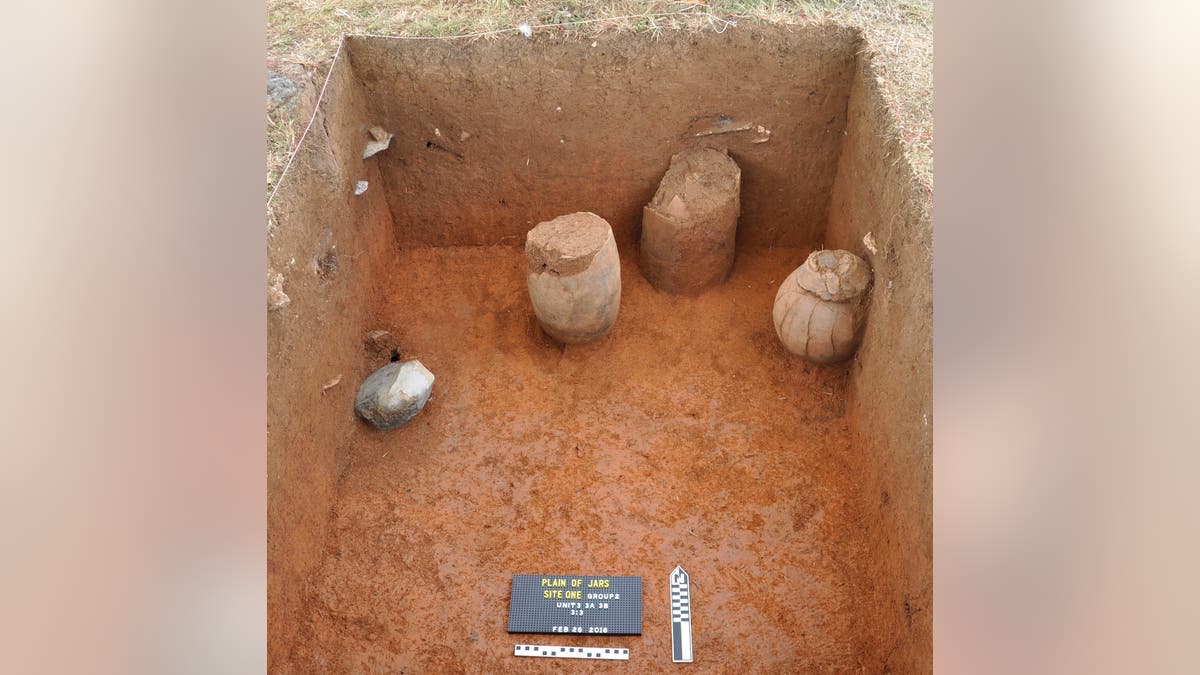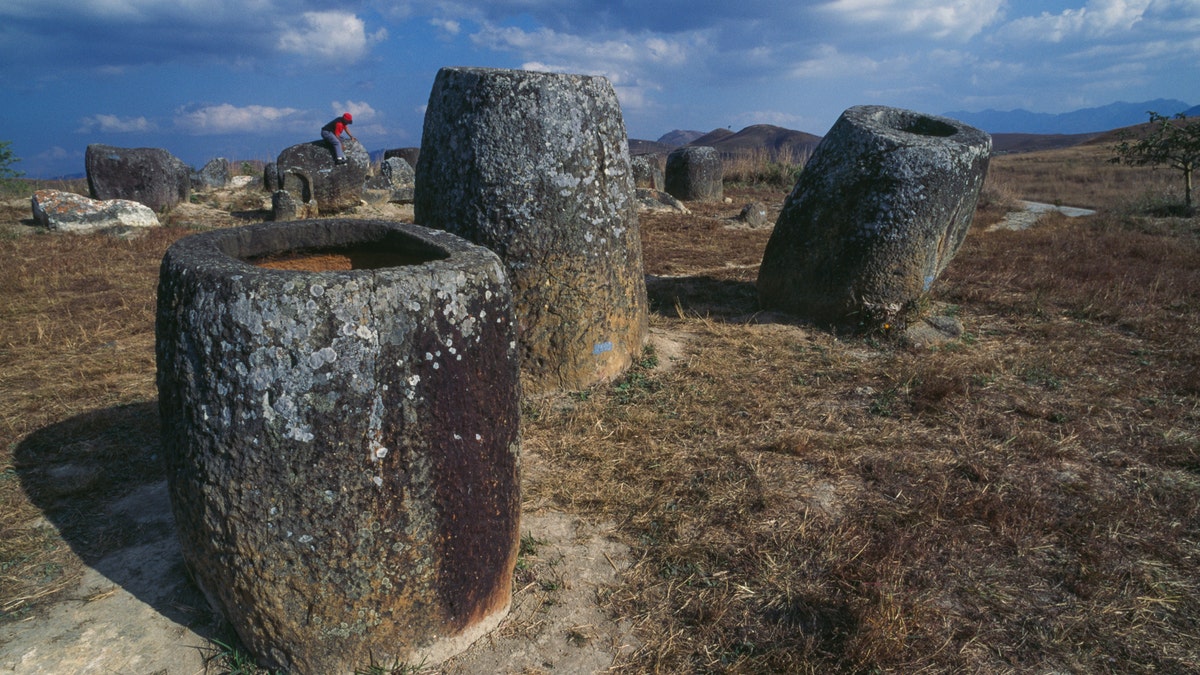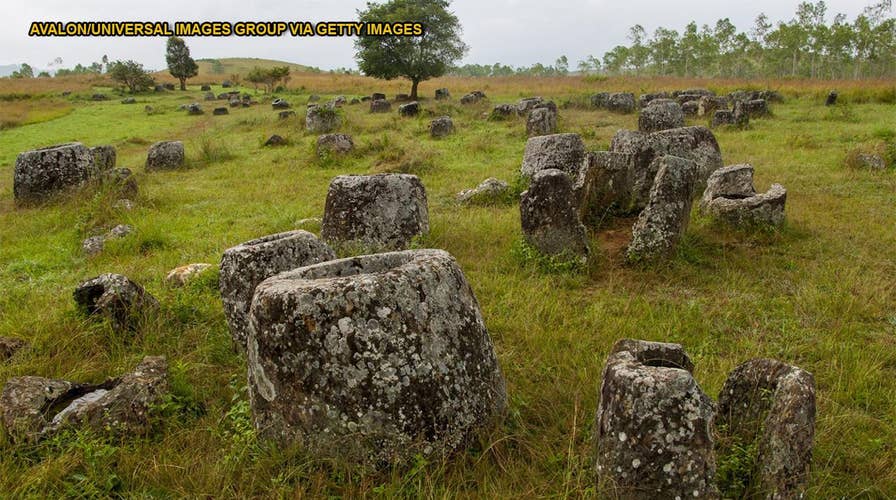Ancient ‘Plain of Jars’ may be burial site for thousands of dead infants and children
Experts believe the mysterious 'Plain of Jars' in central Laos may be the burial place for thousands of dead babies and children. According to new research, a 2016 excavation linked the jars to mortuary practices, high rates of infant and child mortality, and evidence dating interments to the 9th to 13th centuries AD.
The mysterious ‘Plain of Jars’ in Laos has long been a source of fascination to archaeologists and is now revealing more of its grisly secrets.
The stone jars, which are up to 10-feet tall, dot the landscape in Xieng Khouang Province in central Laos. There are more than 2,100 of the tubular megalithic jars in the area, according to UNESCO, which has designated the ‘Plain of Jars’ a World Heritage site.
The strange megalithic structures were first explored in the 1930s, although only limited research has been done since then, according to experts writing in the journal Antiquity. While it is known that the jars were used for “mortuary activity,” relatively little is known about the specifics of the human remains placed in the jars.
'HUMAN SACRIFICE' VICTIMS DISCOVERED AT GRUESOME ANCIENT SITE
A 2016 excavation of an area known as “site 1” containing nearly 400 jars, however, has shed new light on the use of mysterious structures. The research reveals “a range of mortuary practices, high rates of infant and child mortality, and new evidence dating these interments to the 9th to 13th centuries AD,” experts write, in the latest issue of the journal Antiquity.

Ceramic mortuary vessels uncovered during the excavation. (figure by Plain of Jars Research Project 2016/Antiquity)
Researchers found that over 60 percent of the “mortuary population” at site 1 was less than 15 years of age, and almost half of those died at the fetal stage or in early infancy. The high infant and fetal mortality noted at site 1 indicate that ill health and/or malnutrition was an issue for the local population, the researchers write.
While the remains of 18 individuals were found during a limited excavation of site 1, scientists from the Australian National University, the University of Melbourne, James Cook University, the University of Otago and the Laotian Department of Heritage say that thousands more may be interred there.
GRISLY AMPUTATED LIMBS, FRENCH HOWITZER SHELL, DISCOVERED AT BATTLE OF WATERLOO SITE

The Plain of Jars, seen in this undated file photo, consists of thousands of stone jars scattered around the upland valleys and the lower foothills of the central plain of the Xiangkhoang Plateau in Laos and is dated to the Iron Age (500 BC to AD 500). It is one of the most important prehistoric sites in Southeast Asia. (Photo by: Avalon/Universal Images Group via Getty Images)
“Extrapolating from the number of individuals recovered from a modest area of excavation, the mortuary population of the whole site may number in the thousands,” they write, in Antiquity. There could, potentially, be 8,280 burials at site 1, they add.
Megalithic sites in Laos are often dated to the Southeast Asian Iron Age, between 500 B.C. and 500 A.D., so the dating of the interments at site 1 to between the 9th and 13th centuries A.D. is also noteworthy to archaeologists. “This does not necessarily date the megaliths at the site, but the carbon sample from beneath one of the jars indicates that it may have been set in place after c. AD 1163–1256,” they write.
CLICK HERE TO GET THE FOX NEWS APP

Jars in sandstone in the archaeological site of the Plain of Jars, plateau of Xiang Khoang, Laos. (De Agostini Editorial/Getty)
More work is planned to unlock further details of the ‘Plain of jars’ and their role in the ancient society it served. “While mortuary use of the site is now firmly established, the specific purpose of the megalithic jars remains unresolved,” the researchers write. “Future research planned for the site may eventually lead to a conclusive answer.”
Follow James Rogers on Twitter @jamesjrogers





















